What is PVD coated flatware?
You see stunning black, gold, or iridescent flatware and love the modern look. But you hesitate, worried it’s just a paint that will chip, peel, or scratch off.
PVD coated flatware is cutlery colored with Physical Vapor Deposition, an advanced vacuum process. It's not paint. A thin, super-hard layer of ceramic material is bonded to the stainless steel at a molecular level, creating a durable, vibrant, and long-lasting finish.
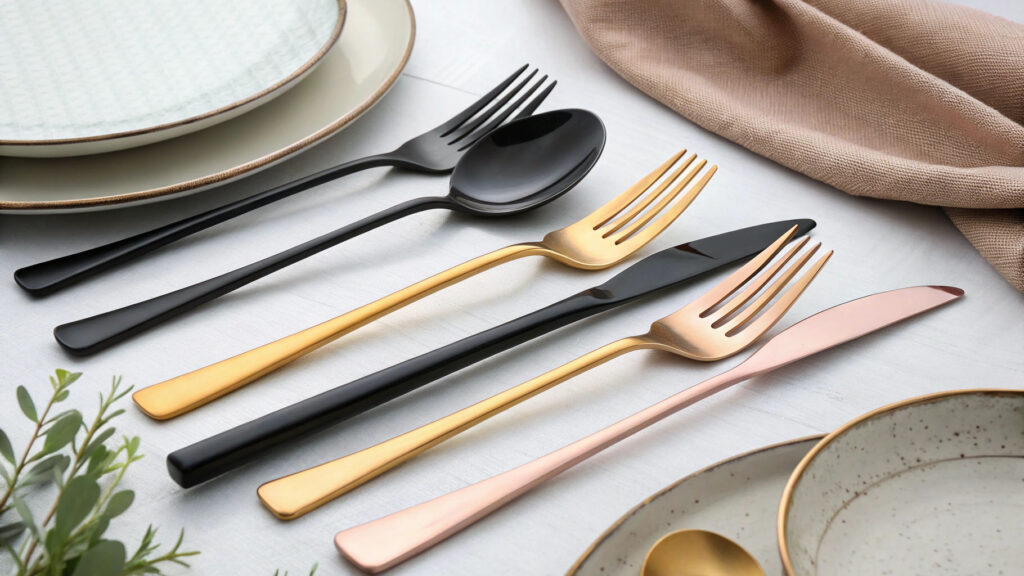
I remember the first time I showed Jacky, a sharp buyer from a major US brand, my new line of matte black flatware. He was skeptical, asking if the color would scratch off in a dishwasher. His question is one I get all the time. Understanding the PVD process is key to trusting the product. It's a high-tech process that is completely different from simple painting or older plating methods. Let's dig into how it works and what it means for your table.
Is PVD coated cutlery safe to use?
The idea of a "coating" on your fork sounds alarm bells. Is this colorful layer safe to eat with? This concern can make you stick with plain silver, missing out on modern styles.
Yes, PVD coated cutlery is completely safe to use. The materials used, like titanium nitride, are biocompatible and inert. This means they don't react with food or your body. They are the same class of materials used for medical implants like pacemakers, guaranteeing their safety.
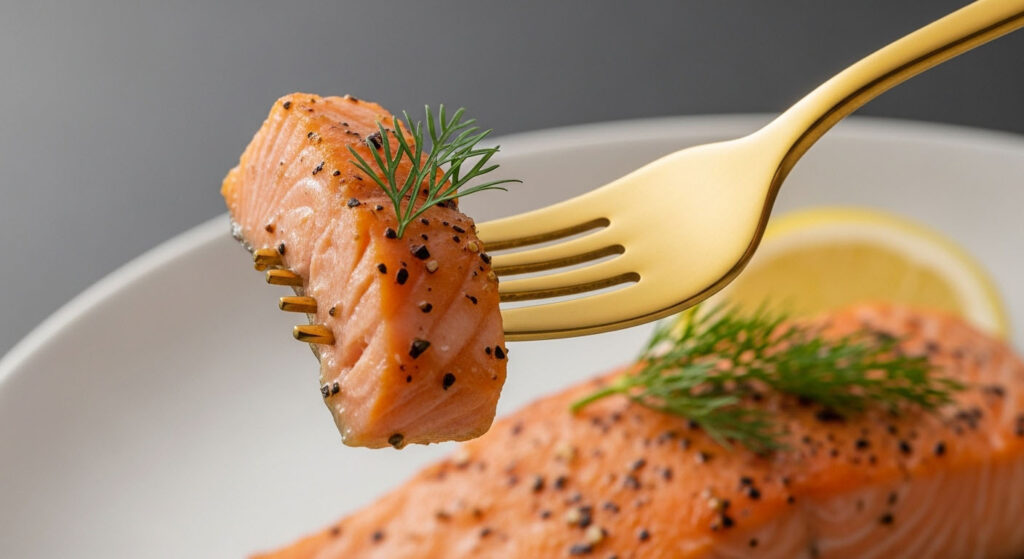
When I'm asked about safety, my answer is always a clear and confident "yes." This isn't just a sales pitch; it's a fact of the material science involved. The PVD process1 uses ceramics like titanium nitride2 and zirconium nitride. These materials are chosen for their extreme hardness and for being chemically inert. The "inert" part is crucial—it means they won't leach anything into your food or affect its taste. The process creates a solid, stable surface that is part of the flatware itself, not something that can flake off into your meal. This is why regulatory bodies like the FDA consider it perfectly safe for food contact.
| Method | Materials Used | Food Safety Assessment |
|---|---|---|
| PVD Coating | Titanium nitride (biocompatible) | Excellent, Inert, FDA Compliant |
| Electroplating3 | Chrome, Nickel, Silver | Varies, can wear off over time |
| Painting | Various paints/polymers | Not Recommended, can chip or flake |
When you choose reputable PVD flatware, you are choosing a product that is as safe as it is beautiful.
What is the process of PVD stainless steel?
How do they get a durable color onto steel that won't flake off? It seems like magic. Not understanding the process makes it hard to trust the durability claims manufacturers make.
The PVD process happens inside a high-tech vacuum chamber. First, the flatware is perfectly cleaned. Inside the chamber, a solid piece of metal like titanium is vaporized into plasma. An electric voltage then pulls these ions, bonding them atom by atom onto the steel.
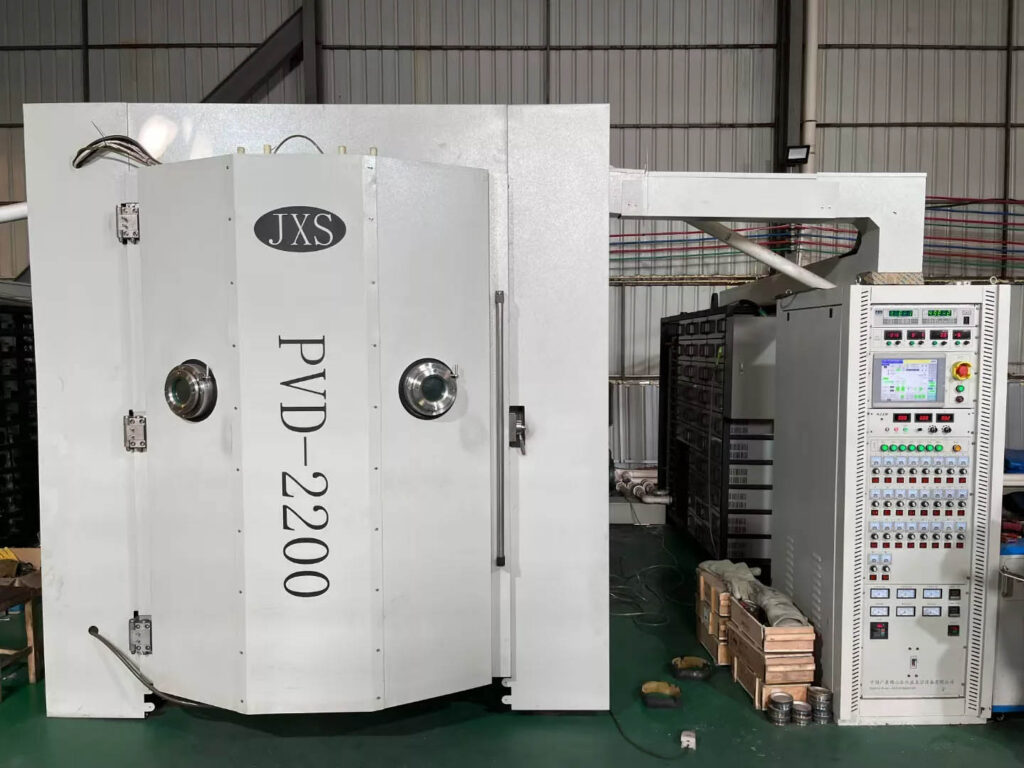
This is not a simple dipping process; it's precision engineering. In my factory, the PVD room is like a clean-room lab. The process has several critical stages that must be perfect to create a quality finish.
- Extreme Cleaning: The flatware must be absolutely clean, down to the microscopic level. Any oils or dust particles would prevent the PVD layer from bonding correctly. We use a multi-stage ultrasonic cleaning process4.
- Loading and Vacuum: The clean flatware is carefully loaded onto racks and placed inside the PVD chamber. All the air is pumped out to create a near-perfect vacuum.
- Vaporization: A powerful electric arc hits a solid "target" of the coating material (for example, pure titanium). This blast of energy turns the solid metal into a vapor, or plasma.
- Bonding: A negative electrical voltage is applied to the flatware. This acts like a magnet, attracting the positively charged metal ions from the plasma. They accelerate towards the flatware and embed themselves into the surface, creating an extremely thin, dense, and hard bonded layer. The final color is controlled by the target metal and tiny amounts of specific gasses introduced into the chamber.
How long does PVD coating on stainless steel last?
You love the look of black flatware but fear it will scratch and look terrible in a year. Is this beautiful finish just a temporary trend that won't stand up to everyday life?
A high-quality PVD coating on stainless steel is extremely durable and can last for many years, even with daily use. The coating itself is harder than the steel underneath, providing excellent resistance to the scratches and wear of normal dining and washing.
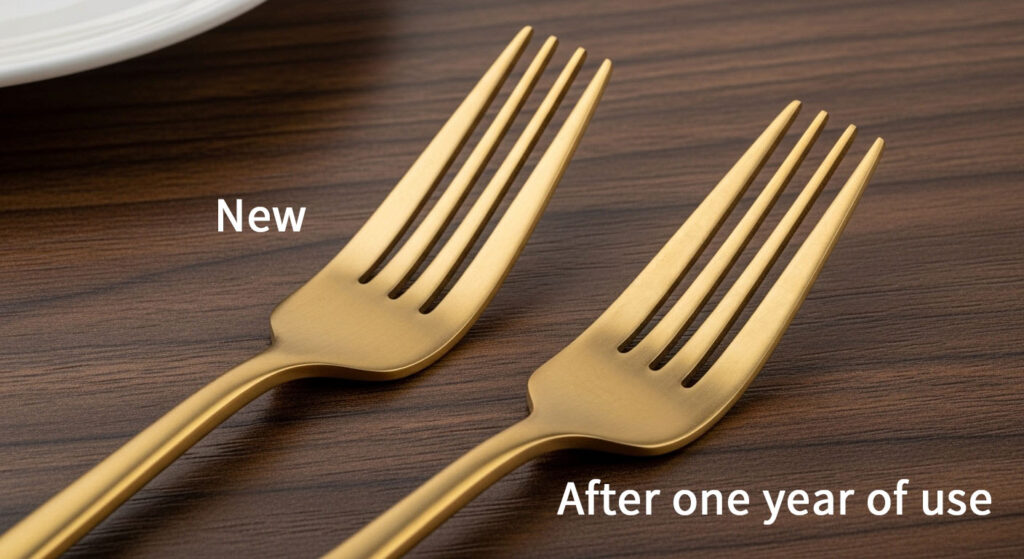
The longevity of PVD is its biggest strength. The coating isn't sitting on the surface like paint; it's bonded to it. This makes it incredibly tough. However, its lifespan depends on a few factors. First is the quality of the application. A rushed, cheap PVD job from a low-quality factory will not last. Second is how it’s used. While it is very scratch-resistant, it's not scratch-proof. If you use a serrated steak knife directly on a PVD-coated fork, you might leave a mark over time. But for normal eating, it holds up exceptionally well. When cared for correctly, it won't fade or tarnish.
| Finish Type | Typical Lifespan (Daily Home Use) | How It Fails |
|---|---|---|
| Quality PVD | 8-10+ years | Slow, gradual abrasion in high-wear spots |
| Electroplating | 2-5 years | Peeling, flaking, chemical tarnish |
| Paint/Lacquer | Less than 1 year | Chipping, scratching, peeling off easily |
For a buyer like Jacky, this long-term performance is key. He needs products that reflect his brand's quality for years, and a well-made PVD finish delivers that promise.
How do you maintain PVD coating?
You just bought beautiful PVD flatware. Now you are afraid to use it. Will the dishwasher ruin the finish? One wrong move could damage your new investment.
To maintain PVD coating, you should wash it soon after use to remove food acids. It is generally dishwasher safe, but you must avoid citrus-based or abrasive detergents. Never use steel wool. Gentle hand washing with a soft cloth is always the best method.
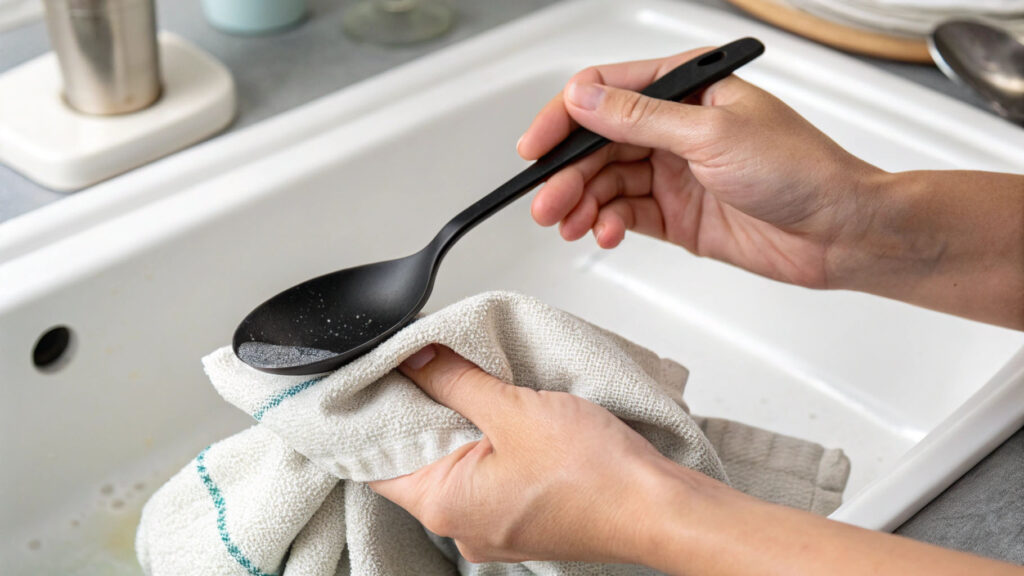
Caring for PVD flatware is simple. It doesn't require special chemicals, just a little attention. The main goal is to protect the finish from two things: harsh chemicals and physical abrasion. Here are the simple do's and don'ts I give all my clients.
What to Do:
- Wash Promptly: Rinse your flatware after using it. Don't let foods, especially acidic ones like tomato sauce or lemon, sit on it for hours.
- Use Soft Cloths: A soft sponge or microfiber cloth is perfect for washing.
- Use Mild Soap: Simple, non-citrus dish soap is best.
- Dry After Washing: Drying with a soft cloth prevents water spots, which are more noticeable on dark or matte finishes.
What to Avoid:
- Abrasive Scrubbers: Never use steel wool, scouring pads, or abrasive cleaners. These will scratch the finish.
- Harsh Detergents: Avoid dishwasher pods and detergents that contain high concentrations of chlorine (bleach) or citrus additives. These chemicals can damage the PVD layer over time.
- Soaking: Avoid leaving your flatware to soak for long periods, especially in water with leftover food or soap.
Following these simple steps will keep your PVD flatware looking beautiful for years.
Conclusion
PVD flatware uses a safe, high-tech process to create stunning and durable colors. With simple care to avoid abrasives and harsh detergents, its modern finish will last for years.
-
Understanding the PVD process can enhance your knowledge of safe materials used in food contact items. ↩
-
Exploring titanium nitride's properties will reveal why it's a preferred choice for safe and durable kitchenware. ↩
-
Learn about the potential risks of Electroplating in food applications and how to mitigate them. ↩
-
Exploring ultrasonic cleaning processes can provide insights into effective cleaning methods used in various industries. ↩
